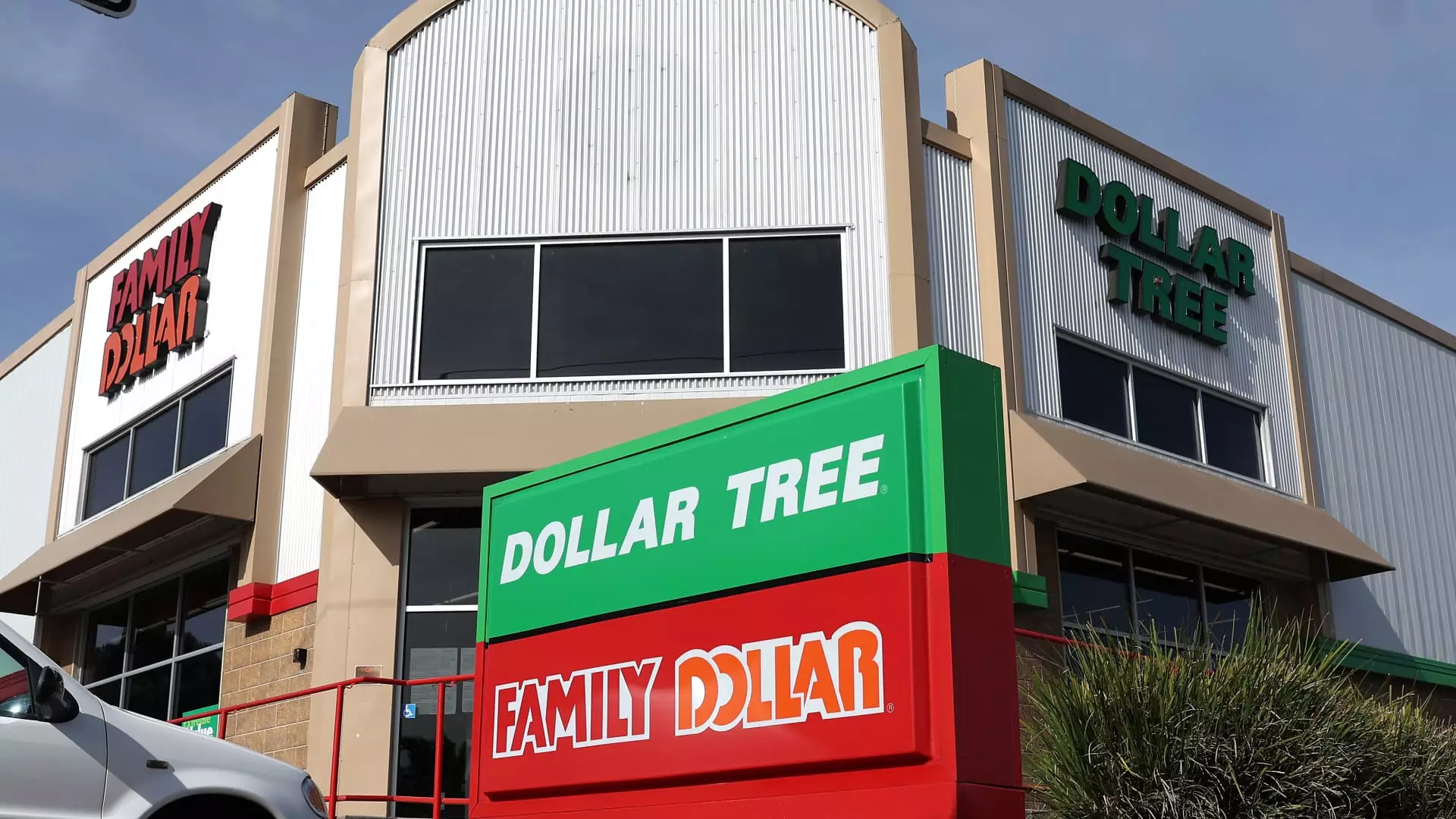Dollar Tree suffered a significant blow in early trading on Wednesday when its shares plummeted by more than 15%. This nosedive was the result of the company slashing its full-year outlook, citing mounting pressures on middle and higher-income customers. Previously, the retailer had projected its full-year net sales to fall between $31 billion to $32 billion, with earnings per share in the range of $6.50 to $7. However, the revised guidance now forecasts lower net sales between $30.6 billion and $30.9 billion, alongside adjusted earnings per share ranging from $5.20 to $5.60.
Chief Financial Officer Jeff Davis attributed this downward revision to several factors. Notably, Dollar Tree faced softer sales and incurred additional costs from converting 99 Cents Only stores. Moreover, the company encountered higher expenses related to customer incidents at stores, necessitating reimbursements, settlements, and litigation.
Dollar Tree’s financial performance in the fiscal second quarter further underscored its challenges. The company reported adjusted earnings per share of 97 cents, falling short of the $1.04 anticipated by Wall Street analysts. Additionally, its revenue of $7.38 billion missed expectations of $7.49 billion. Notably, the earnings figure excluded a 30 cents per share charge for general liability claims, further denting its financial standing.
The financial setbacks experienced by Dollar Tree are not isolated incidents but rather a reflection of broader market trends. Dollar stores, catering primarily to lower-income consumers, have been under pressure due to changing consumer behavior. Shoppers, constrained by financial limitations, have been forced to make trade-offs in their spending habits, particularly in the face of rising food and everyday costs. Subsequently, Walmart and newer online players offering affordable merchandise have attracted value-conscious customers across income brackets, further eroding Dollar Tree’s market share.
Dollar Tree’s business model encompasses two distinct store chains – its eponymous brand, offering a wide array of budget-friendly items like party supplies, and Family Dollar, focusing more on food products. While Dollar Tree experienced a modest same-store sales increase of 1.3%, Family Dollar witnessed a slight decline of 0.1%. This discrepancy in performance highlights the challenges faced by the company in catering to different consumer segments.
Looking ahead, Dollar Tree must navigate a complex landscape marked by inflation-stretched consumers and company-specific hurdles. The closure of approximately 1,000 Family Dollar stores, announced earlier this year, underscores the market challenges faced by the company. Moreover, the potential sale of the Family Dollar brand indicates a strategic shift to bolster its competitive position in the retail sector. At the same time, addressing escalating liability claims presents another obstacle that Dollar Tree must overcome to regain investor confidence.
Dollar Tree’s recent struggles underscore the volatile nature of the retail industry. Adapting to evolving consumer preferences, managing operational costs, and staying ahead of market trends will be crucial for the company to sustain its growth trajectory and restore shareholder value. Only through proactive measures and strategic initiatives can Dollar Tree rebound from its current setbacks and emerge stronger in the competitive retail landscape.


Leave a Reply